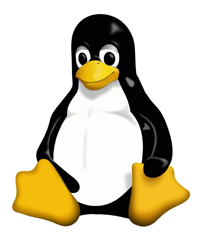Today is August 23rd, 2016 and it is the 25 year celebration of the World Wide Web and Linux — two foundations of the technology revolution.
Can you imagine what life would be like if Sir Tim Berners-Lee never designed and deployed the World Wide Web network and hyperlink? If that was the case, someone else might have done it. However, we can credit Sir Berners-Lee with giving us all the capability to read this post, publish corporate websites and blogs, interact via social channels like Twitter, Facebook, LinkedIn, Snapchat and Instagram, watch streaming movies on Netflix or YouTube videos of the Olympics, and now access all of this information and functionality through miniature computers that we all hold in the palm of our hands (AKA: smartphones) that are more powerful than the mainframe systems that put people on the moon.
 While these customer-facing experiences are apparent to many, most people don’t have a sense of the underlying infrastructures that power these things. The Internet pipes by companies like Cisco. The cloud computing offerings and micro-services from leaders like Amazon that are replacing the on-premise and costly data centers for individual organizations. The new platforms that enable all of this to be created and distributed in containers from Docker. What haven’t we referenced? A little thing represented by a penguin called Linux.
While these customer-facing experiences are apparent to many, most people don’t have a sense of the underlying infrastructures that power these things. The Internet pipes by companies like Cisco. The cloud computing offerings and micro-services from leaders like Amazon that are replacing the on-premise and costly data centers for individual organizations. The new platforms that enable all of this to be created and distributed in containers from Docker. What haven’t we referenced? A little thing represented by a penguin called Linux.
Linux powers tremendous pieces of the Internet—from infrastructure and data centers to websites, stock, health and advertising exchanges, and many of the leading operating systems like Android and Google Chrome. Linux has not only been the catalyst for systems and new product developments, but has also spurred the open-source movement leading to the emergence of corporate technology and software leaders like Red Hat (as well as the disappearance of many others that never embraced digital — including more than half of the Fortune 500 since the year 2000, according to the CEO of Accenture). Similar to Sir Tim Berners-Lee with the World Wide Web, we must thank Linus Torvalds — the Finnish-American software engineer who created the Linux kernel.
Okay, so 25 years of the World Wide Web and Linux. If we think about the connection between people, processes and technology to drive customer experiences and business outcomes, these foundational innovations symbolize digital transformation. Two and a half decades after their introduction, these platforms and protocols are still around today and more pervasive than ever. They started as experiments and turned into enabling, scalable and extensible networks and systems that redefined how people connect, communicate, interact, work and live—both the user-facing omni-channel experiences and the back-end building blocks that make it all happen (thank you, developers and visionaries).
Whether it’s artificial intelligence, machine-based learning, robots or the Internet of Things (IoT), whatever comes next owes a great deal of respect to the World Wide Web and Linux—or, more appropriately, Tim and Linus. Thanks for establishing the foundation for digital transformation, gentlemen … two forces behind the era of digital natives. Just imagine what life will be like 25 years from now!
